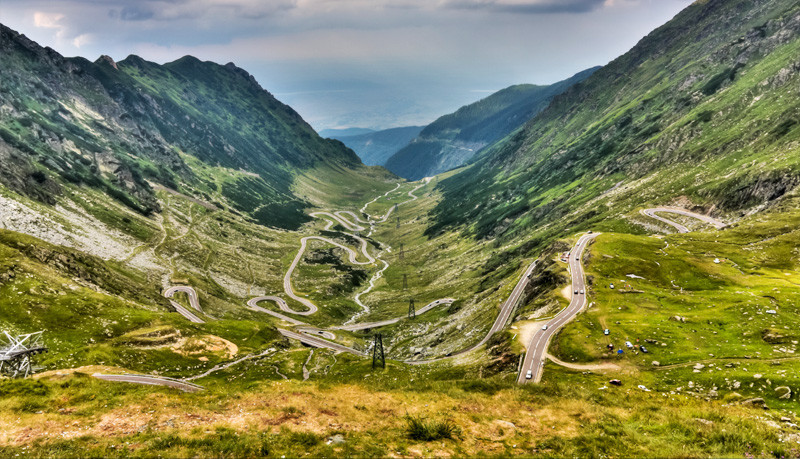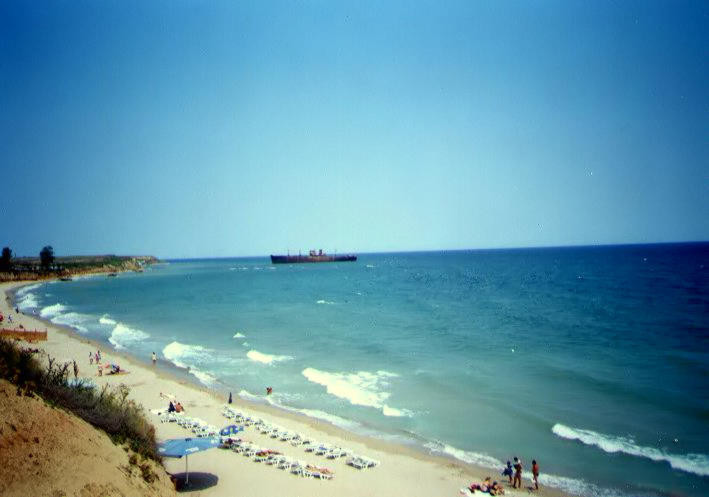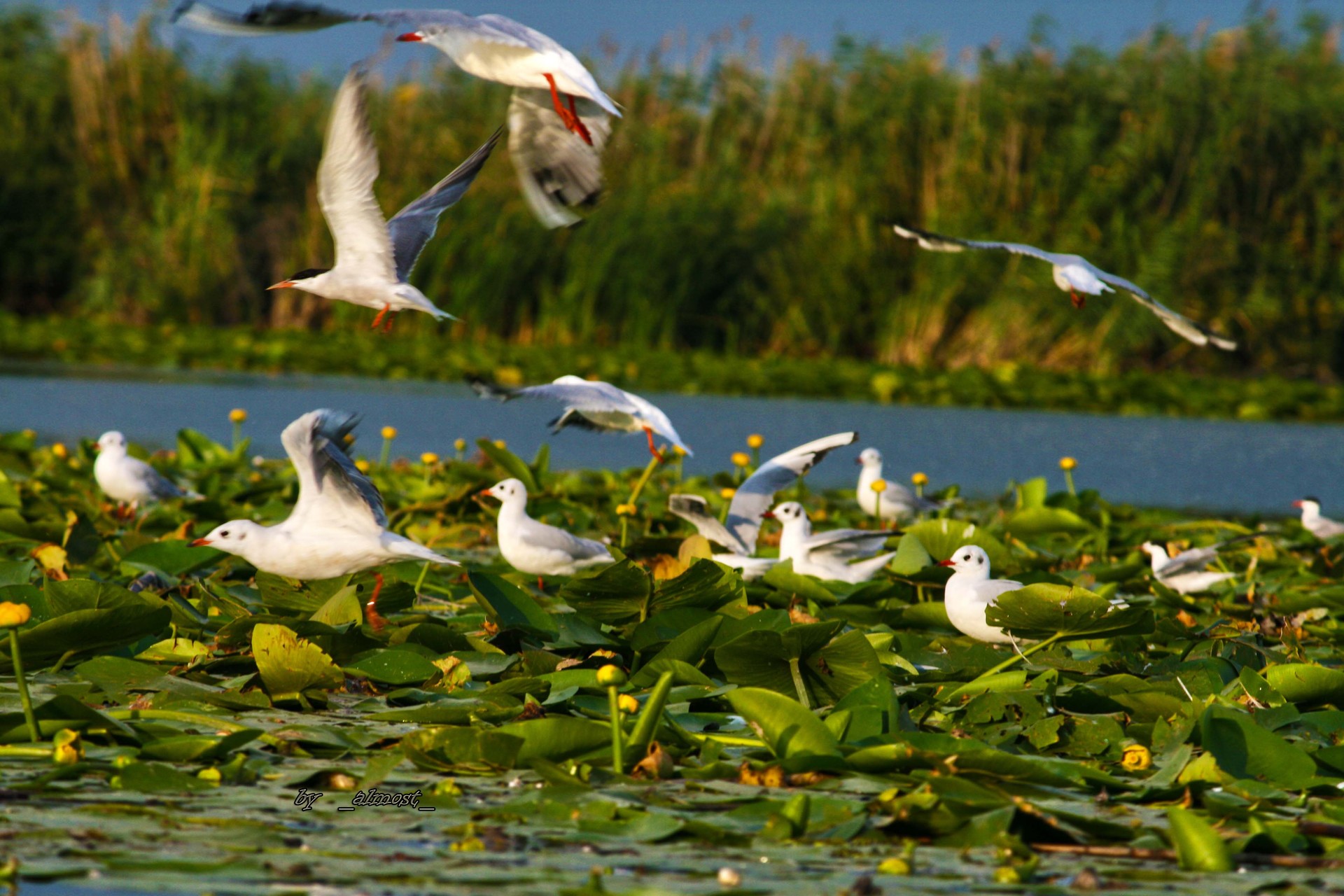Geography lesson - Romania
Hello all!
I have to say sorry in advance, because this post will generally describe Romania, regardless student-life, universities, Erasmus and anything else. But I had to do it, because it would be a failure not saying a word about the following attractions.
Romanian map looks like a fish. The fish’s tale represents the country’s exit to the sea, and its face is oriented to West (or better, Western Europe). What I love of Romania the most is that it’s proportionally equally flat, hilly and mountainous. It can surprise every visitor and of course everyone can choose what he or she is interested about and what to experience. If someone desires to hike in the mountains, he gets that! If someone prefers the seaside, he can reach that too! If someone loves the hills with fruit-trees and vineyards, Romania can offer that kind of panorama as well. Romania can offer almost anything if we talk about landscape!
Come to Romania to see the Carpathian Mountains, more than 2500 metres high!
Say hello to the Eastern, Southern and Western Carpathians. Well, Eastern Carpathians are worth visiting, because there are a lot of pine forests, great altitudes, and natural resources, soils and spring waters. Waters perfect for drinking or waters in pools or lakes optimal to bathe in. These ‘healing-waters’ given by mother-nature, containing lot of salt, sulfur, copper, volcanic rocks and minerals can treat or at least ameliorate pain and diseases, and make rejuvenate people, transforming them in younger and more beautiful persons. There are many mofettas/fumaroles in the Eastern Carpathians. These are like little rooms in forests, where due to volcanic activity hot sulfurous gases emanate, having benefic effects on impaired health conditions. Another interesting fact about the Southern part of the Eastern Carpathians is that there’s a population of Hungarians, called ‘Szeklers’ (székely). It’s like an island in Romania with Hungarian habitants. This is like this from the very beginning of time. Interesting, huh?

The Southern Carpatians have the highest altitudes: 2544 metres Moldoveanu top in Fagaras Mountain. There are a lot of glacial lakes and natural reservations. Two famous routes are the Trans-Fagaras and the Trans-Alpin car routes. Meaning, there were built tracks for car traffic in these mountain regions. Car paths which bond mountain sections with each other and establish connection between mountains and cities/villages as well. These serpentines paths are definitely one of Romania’s greatest attractions! Car races video games coming alive!

The Western Carpathians are not so high, but very diverse. The flora and fauna is very rich, there are a lot of paths for wanderers, plenty of natural lakes, weekend-houses, guesthouses and events. The Western Carpathians are easy to reach, the hiking trails are not so wild and dangerous like in the Southern or Eastern Carpathians. And another advantage is that the zone of mountains can be reached by train as well. Those trains that travel between middle and western Romania, all go through the Western Carpathians. These are in conclusion, popular and often visited mountains. The Carpathians originating from Austria and being present in ten different countries have a dominant role in Romania’s tourism.

Come to Romania to go hiking!
There are pine, oak and beech forests where you can go hiking and enjoy the beautiful landscape.
Come to Romania to swim in the Black Sea and have a great time at the beach!
Costinesti, Mamaia, Eforie-Nord, Mangalia and Neptun are just a few locations where tourists, but also Romanians, often go during summer. The Black Sea is frequented by bands and artists, and it hosts cultural events and festivals too. In general, the seaside is clean and enjoyable, but the culture and the mentality in this part of the country is different than in the central parts surrounded by mountains. Here in the South, there are no Hungarian or Saxon or any other influences, but 100% Romanian (partly Bulgarian and Greek) population. The landscape is similar, plains and mostly agricultural and industrial territorries. The seaside and the summer resorts are very nice, and for those who miss the sea, it’s an excellent programme to travel by train directly to the beach. However, I would recommend it more for those people who live in Bucuresti or Iasi, because from the Transylvanian part (Cluj, Brasov, Sibiu), or the Western part of the country (Arad, Timisoara, Oradea), the journey lasts 10-12 hours by train, which is pretty exhausting.

Come to Romania to visit the Danube Delta!
The Danube river is just like the Carpathians. It flows through ten different European countries. The Danube runs in the Southern part of Romania, and it forms a wide delta before flowing into the Black Sea. This river delta is part of UNESCO World Heritage Site. People do live here in the Danube Delta, however, it’s not the most developed part of the country. The flora and fauna (except mosquitos) is phenomenal. It’s in fact wild and pure nature itself. People eat fish all the year, and travel by boats on the branches and micro-deltas of the river.

Come to Romania to see Natural Reservations, bears and a volcanic lake!
Although Romanians don’t know how to make a lot of money from nature’s treasures, nor how to manage it, nor how to protect nature properly, there’s still no doubt that it has the most beautiful landscape in Eastern Europe (sorry, I’m biased about it). The only one volcanic lake, ‘lake St. Anna’ in the Eastern Carpathians is surrounded by pine forests. It’s a quite common thing that bears frequently come 'check water quality' of the lake. And in general, the appearance of bears is usual in the Carpathians.
Come to Romania to ski in wonderful mountains!
Brasov, Sinaia, Predeal are the most famous ski resorts, but Cavnic, Baisoara and many more are popular in the region of Cluj.

Come to Romania to visit cities with Saxon influences!
I have to say that Transylvania (central Romania, also my city of birth is in Transylvania) is a bit different than the other parts of Romania. It has more Western European influences and it was always the centre of intellectuality. Thus, you can notice that for example several parts of Sibiu, Brasov, Bistrita, Medias or Cluj look like typical Austrian, German or Saxon cities. Cobblestones, ornamented, old, classical buildings, Gothic churches, towers and fortresses, castles... Transylvania is a mixture considering architecture, work-field and also population. Romanian, Hungarian, German influences all characterize and shape this region.

Come to Romania if you love rustic life!
If you want to see cows walking on streets, old grandmothers baking real bread by their own grains, pig slaughter ceremonies (I hate them), sheepfolds and hear a lot of traditional Romanian music in Romanian restaurants; if you are curious about how cheese and other dairy products come alive in natural conditions (not in factories), if you’re interested about everything which is hand-made, and love to bite in real fruits brought by farmers... then you will like being in Romania. I love my home-country because it has remained authentic, and it hasn't followed Western European or American trends, it didn't transform itself into 'plastic', it still has a wild and unique character. Of course, this can be a disadvantage too, because it's not as developed, as in general the other EU member countries, and the mentality is so various, and people have such a different knowledge what makes evolution a very slow procedure.
On the other hand, if you have big expectations of high-technology, very well-functioning society, good infrastructure, logistics, precision and development in study and work-field... Then just change all these high expections a bit lower. So this way, you’ll face no surprise. True that Romania has a lot of cool points and unique characteristics, you will never find anywhere else in the world, but the system, the politics, the whole machinery don’t work as good and efficiently as the more developed Western European countries. If you come from Germany, Scandinavia or the UK for example, you may probably miss some things from your country, but if you’re enjoying your stay and perceive it as a new and unusual life-experience, I promise you’ll go home ten times richer than you arrived. Keep on reading my following posts as well!
Thanks for reading. Dora.
Photo gallery
Content available in other languages
- Español: Clase de geografía - Rumanía
- Italiano: Lezione di geografia - La Romania
Want to have your own Erasmus blog?
If you are experiencing living abroad, you're an avid traveller or want to promote the city where you live... create your own blog and share your adventures!
I want to create my Erasmus blog! →










Comments (0 comments)